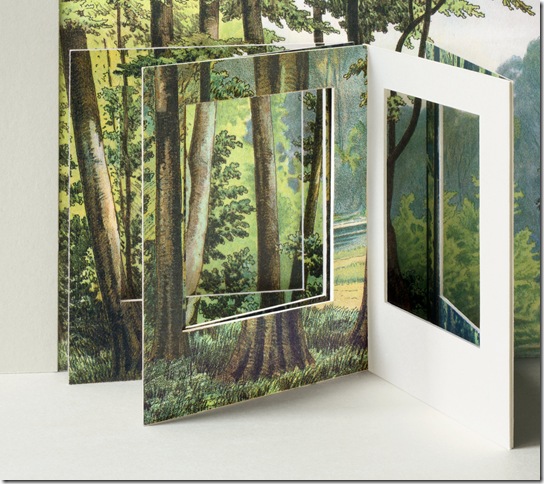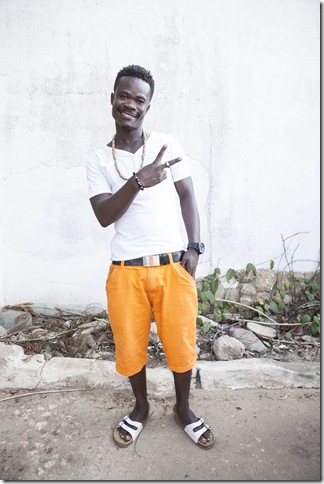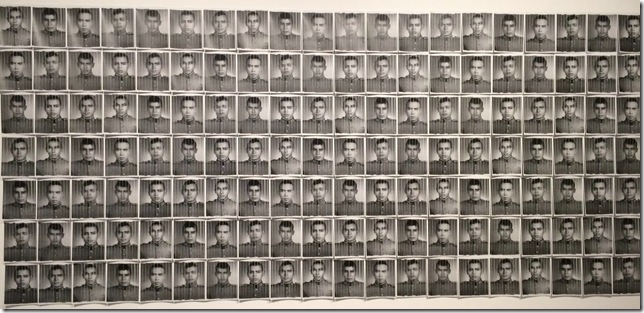Rami Maymon. Miriam Böhm. Delphine Fawundu. Renato Osoy. The names might not mean much to us now, but they are the future of photography. This is one future that is looking bright, but first it needs to survive a little competition.
It was great news when, earlier this year, the Norton Museum announced it was bringing back the Rudin Prize award, and the exhibition that accompanies it, for a second time. Each of the four artists acting as judges nominates one emerging photographer. A group exhibition showcases the works of the four nominees and culminates with one crowned winner taking home $20,000. This year, the winner will be announced Dec. 1.
The exhibition opened last month and does not end until Jan. 11, but I already have cast my vote, literally. The museum has paper ballots for visitors to support their favorite photographer and have a little fun. The actual decision, however, is made by the museum’s curators, trustees and collectors.
There is a lot of heart in Fawundu’s images. She is the first candidate we encounter in the show and the most colorful. The Brooklyn-based artist has documented hip-hop culture for more than 20 years and it shows. A series of images depicts young men wearing t-shirts, shades and pronounced buck belts. One is captured sitting at a keyboard in a room with orange walls. An exposed light bulb hangs on the right. In some of the shots, the men stand tall and confidently, as if feeling invisible. In others, they appear lost in thought, tired and staring at the floor. One man’s hands are locked in prayer. Curtains cover the windows of the rundown room and there are wires exposed. These intimate images say Fawundu is very comfortable and very familiar with the subject.
Another subject of her passion is the African-American female identity, which she explores in several large images here. It takes a second look to realize the three women depicted in Maasai to the Present, Nairobi, Kenya are really one woman. This woman’s evolution takes place at a bus stop plagued by graffiti. Standing to the right, she wears jeans, slippers and a pink t-shirt. Meanwhile, the center figure adopts a headpiece and a noticeable necklace with earrings. By the time our eyes travel left, the woman is in full garment. There is no sign of the conventional, casual attire. She has fully embraced her essence and wants us to be aware of it.
Left of Fawundu is the intriguing body of work of Osoy, who was born in Guatemala. A sea of uniformed men greets us the minute we step inside his space. This army is composed of 140 digital prints of images that were reduced to vertical strips. They have been kept in order to retain the facial features although the divisions are still visible. Because the strips have been placed at slightly different heights, it would appear that there are 140 unique set of eyes and lips facing us. A closer look reveals there are in fact only seven unique faces. The greater diversity we witnessed earlier is just an illusion. The piece is titled Archival Iterations, Identity Variations (2012).
Accompanying this work is a puzzling two-channel video titled Mirrowing Mirror (2012). The continuous footage features a blond, blue-eye woman sporting a black cardigan. She appears sitting down in both sides of this mirror, but the image is not identical. On the right, her eyes are closed and her hair is loose. On the left, she has opened her eyes and wears her hair in a braid. The placement of her bracelet is consistent with a mirror reflection.
The artist pays attention to the less-special moments and focuses on the mundane. The everyday life is his muse. A description has him as someone who “magnifies what would otherwise happen unseen.”
The minimalist angle comes courtesy of Germany-based Böhm, who is known for her ability to portray a three-dimensional world by pushing the limits of the camera. A series of complex images here resulted from a repetitive process during which Böhm photographed arrangements of objects and patterns only to use the photograph later in a later arrangement. The end product is intricate, but kept clean and orderly.
Another example of her depth is Quartett I (2011), in which a piece of paper appears being folded in several steps. Set against a brown background, some of the corners are darker than others to illustrate the progress made. It comes across as a lesson in origami.
Simplicity and control are beautifully capture by a group of three images titled Prospect I, Prospect II and Prospect III (2012). Vertical panels suspended in space divide the frames colored in whites and silvery tones. They are precise and not needy. The images do not crave attention and we sense that they will not mind if we missed them. Their refined aesthetic would certainly be ignored if placed adjacent to vivid, conversational pieces. But here, with a room of their own, they rock the place.
Distinguishing images from the objects carrying them is Maymon’s main focus. Compared to the other three nominees in the show, there does not seem to be a central theme to the body of work displayed here. He is less predictable and his pieces look like wild, photographic experiments.
The images are manipulated, distorted and abstract in a way. Most are left untitled. One of them features a black-and-white print with a pink horizontal stripe dividing the frame into two. The cave depicted on the shot has been literally painted over, hence the title of the piece: Untitled (La Cueva Pintada), which translates into The Painted Cave.
Another one features a photograph of a nude bathed in a rich, yellow hue resembling perhaps some type of chemical. It is as if the photograph had been left in the dark room. Another surprise is the gigantic crumbled print made out of aluminum at the center of his gallery room.
Maymon’s creative process involves using a variety of media to challenge our concepts of originality and authenticity. There is no universal definition for them, his pieces seem to suggest. The Israel-based artist embraces the way images and their contexts shape up and challenge meaning. He does not seem bothered by the lack of a consistent, universal truth.
These promising photographers and their edgy contemporary works have yet to have a solo museum show. Less than a month stands between one of these names and the five-figure prize that could change that. Until then, let us offer them the next best thing: our undivided attention.
The Rudin Prize exhibit runs through Jan. 11 at the Norton Museum of Art in West Palm Beach. Admission: $12 adults; $5 ages 13-21. Hours: 10 am-5 pm Tuesdays-Saturdays except Thursday, 10 am-9 pm; 11 am-5 pm Sundays; closed Mondays. For more information, call 561-832-5196 or visit www.norton.org.



